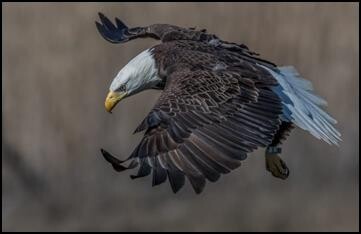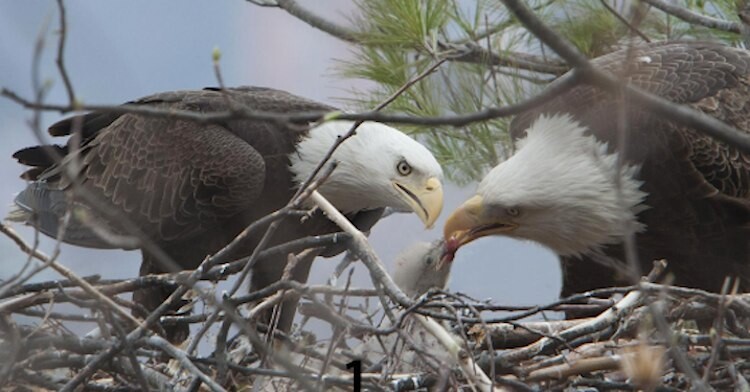Image


The bald eagle population in New Jersey continues to climb, according to the 2022 New Jersey Bald Eagle Project Report developed by the NJDEP’s Fish and Wildlife and the Conserve Wildlife Foundation, with 250 active nests identified last year.
The 250 active nests (meaning the nests produced eggs) represent an increase of 28 active nests since 2021. Of those nests, 83 percent were successful and collectively produced 335 offspring. The productivity rate for nests with known outcomes was 1.42 young per nest, above the range required to maintain healthy population numbers.
 Photo by Rich Nicol
Photo by Rich Nicol“New Jersey continues to collect high-quality data on the health and productivity of its bald eagles, which is no small feat given the species’ ever-growing numbers. Other states increasingly look to New Jersey’s volunteer-based monitoring program as a guiding example of how to monitor this species efficiently and effectively in this latest stage of its recovery. It is a fitting moment to recognize these successes, as the Endangered Species Act, which supported this inspiring recovery, now celebrates 50 years,” said U.S. Fish and Wildlife Service’s Northeast Eagle Coordinator Thomas Wittig.
The 250 active nests confirmed in 2022 represent a more than two-fold increase over the 10-year period beginning in 2013, when 119 active nests were counted. The Delaware Bay region remained the state’s eagle stronghold, with roughly half of all nests located in Cumberland and Salem counties and the bayside of Cape May County.
 Bald Eagles feeding their young, NJ, 2015
Bald Eagles feeding their young, NJ, 2015A total of 267 total territorial pairs were monitored in 2022. This number includes pairs with active nests and those that maintained nest territories but did not lay eggs. Fourteen new territorial nesting sites were confirmed in the southern region, 10 in the central, and five in the north.
“The continued growth of New Jersey’s bald eagle population is an inspiration to all of us and is a direct result of strong environmental protection laws, firm partnerships, innovative scientific techniques – and the dedication of many volunteers who devote much of their time to monitoring and protecting eagles,” said NJDEP Commissioner LaTourette. “The efforts of the New Jersey Bald Eagle Project – a partnership among the DEP, Conserve Wildlife Foundation of New Jersey, and volunteer eagle watchers – demonstrate how new technologies, effective coordination, public engagement, and education are at work to protect treasured wildlife species such as the bald eagle.”
 # of active Bald Eagle nests in New Jersey over the years
# of active Bald Eagle nests in New Jersey over the yearsFor more information about the New Jersey Bald Eagle Project, visit the Conserve Wildlife Foundation of New Jersey’s website, and the DEP’s website.